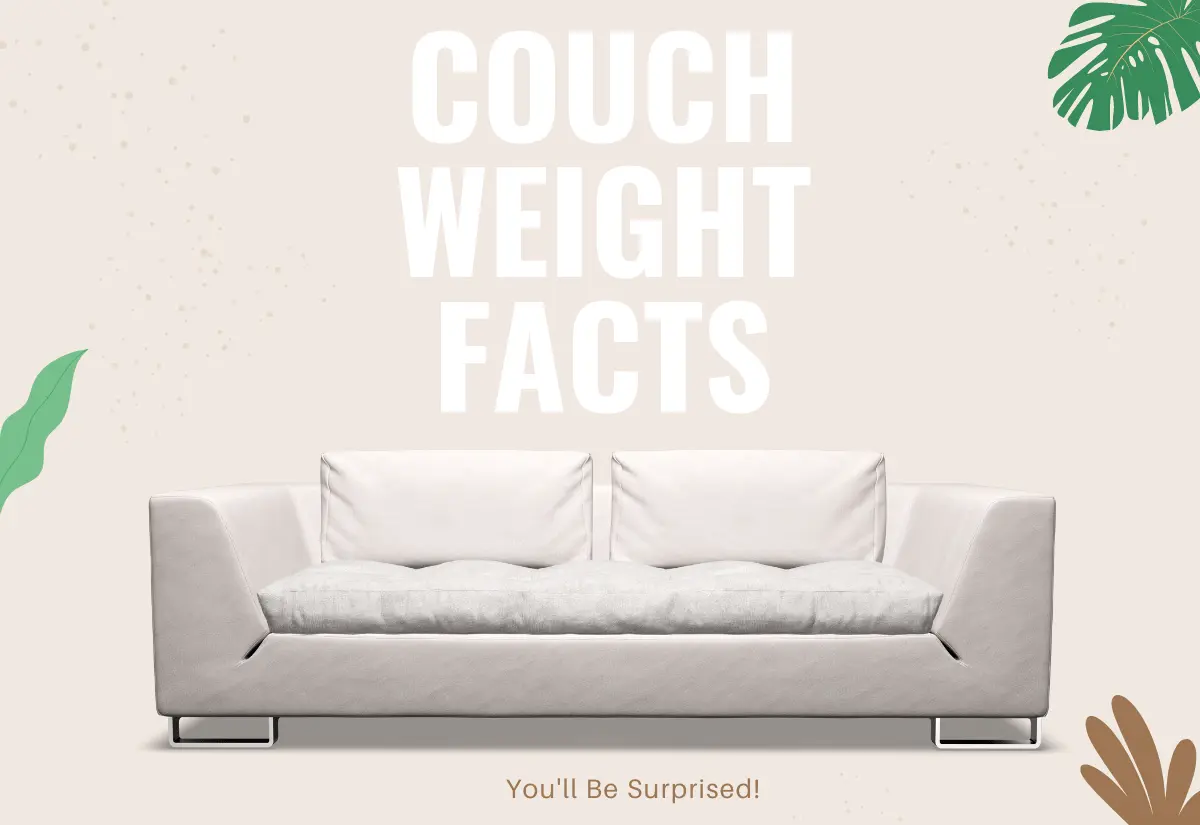Do you think you’re tired of having to buy new couches all the time? And still curious about how long do couches last. There’s no other place to look! We will explore the subject of couch longevity in this post and present you with all the information you require.
Whether you live in a house or rent, getting a durable couch is crucial for your comfort and mental stability. We will explore the components that influence the couch’s life span, for example, the materials’ quality and the maintenance required.
We will also give you valuable advice on the best way to expand the existence of your couch so it keeps on looking awesome for a long time to come. Hence, keep reading assuming you’re interested in figuring out how long your couch will last and how to boost your investment!
How Long Do Couches Last?
Buying a couch is viewed as an investment. You wouldn’t simply get up one morning and choose to purchase this dress. Not at all! It could take a lot of savings for a couch. In addition, you should get one that will last you for a few more years.
A couch typically lasts seven to fifteen years. In any case, this will differ depending on the material, quality, frequency of utilization, and level of maintenance.
For example, a couch that is often utilized as a dozing as well as a couch may not keep going as long as you could naturally suspect. Since the pads get more slender and more broken down the more you sit and rest on them.
However, a couch that is expected to be utilized for sitting has more possibilities of enduring deterioration and can persevere as long as 20 years.
It’s also essential for you to comprehend that a sofa will endure longer if it isn’t utilized routinely.
Components That Affect The Lifespan Of A Couch
1. Material Quality
The life span of a couch is incredibly impacted by the nature of the materials used to develop it. Genuine leather or durable materials are examples of high-quality materials that give a life span to couches; these materials will endure longer than less expensive, substandard other options.
2. Construction
A couch’s life expectancy is also impacted by how it is constructed. Strong frames, well-nailed cushions, and tight seams will all contribute to a couch’s longer lifespan than weaker construction.
3. Utilization and handling
A couch’s life span will also be influenced by how and how frequently it is utilized. Much of the time utilized couch that isn’t maintained will break down more rapidly than one that is utilized less regularly and is very much maintained.
The sofa’s life can be increased with routine cleaning, vacuuming, and stain and spill assurance.
4. Brand quality
How long a couch endures can still be up in the air by the nature of the brand. Couches from famous producers who are known for making solid, great furniture generally endure longer than those from less quality or more affordable brands.
5. Individual decision
When choosing a couch, taking into consideration your tastes is significant. Which color, size, and style are your top choices? What purpose do you have for the couch? How many individuals are going to use the couch? These components will help you pick a sofa that suits your necessities and will persevere for a long time.
Are Sofa Beds Comfortable? Unveiling the Truth Behind Your Sleep!
Side effects that demonstrate the finish of life for your couch
Sofas in the end normally show side effects of mileage, which is a warning that their valuable life is concluding. It’s basic to know about these side effects with the goal that you can choose whether to replace, reupholster, or fix your couch. Coming up next are average signs that now is the ideal time to retire your couch:
Sagging Pads:
Assuming your couch’s pads are starting to lose their structure and sag the sofa isn’t giving you the help and solace you want.
Sign Of Visible Frame Damage:
Your couch’s structural integrity might have been imperiled on the off chance that you see any parts, breaks, or harmed parts on the edge.
Overuse:
Now is the ideal time to consider reupholstering or replacing your couch assuming the upholstery is excessively worn, torn, or blurred to be fixed?
Bad smell:
If your couch has a bad smell that doesn’t disappear after cleaning, it tends to be a side effect of shape or mold development and now is the right time to purchase another one.
Awkward seating:
On the off chance that you’re experiencing difficulty finding an agreeable situation on your lounge chair, it very well might be because the cushions or springs are done supporting the furnishings.
Understanding these side effects will empower you to settle on your couch’s next game plan with information. Basic fixes or reupholstering might have the option to increase the existence of your couch. In any case, it very well may be an ideal opportunity to begin pondering getting a substitution if the harm is extreme or the couch is simply excessively old.
Instructions to Maintain Your Couch to Make It Last Longer
Each homeowner trusts that the sofa or couch they buy will last them for quite a while. Some would try and do an amazing job to cover the extra costs.
Even after three years, you will still be returning to the stores if your couch is not well maintained, regardless of its quality.
Choosing a couch made of a dependable material is smart and ought to be your best option.
In any case, there are a couple of things you ought to do to increase the life expectancy of your couch, which is somewhere in the range of seven and fifteen years. Also, wouldn’t it be awesome if you followed them all, your couch might satisfy 20 years. These actions consist of:
Daily Cleaning
Because we spend our entire lives on couches, they are more susceptible to various types of dirt. From dust, pet hair, food particles, and beverage spills. They therefore need to be cleaned on a regular basis. On the off chance that there is a spill, it is vital to clean it immediately to prevent more stains on the couch.
You likely won’t see when a leather couch is messy, yet it’s as yet important to wipe the residue off of it to hold it back from developing.
Normal vacuuming will draw out the existence of microfiber and microsuede couches by eliminating soil and food particles.
Always remember that a dirty couch is more defenseless against crumbling, however day to day cleaning will resurrect it.
Standard Living Room Size: Secrets to a Perfectly Balanced Space
Avoid Putting the Couch in Direct Sunlight
Leather couches are not planned to persevere through daylight, however some are. Keep your leather couch out of direct daylight consistently to keep it from blurring and breaking. A leather sofa loses its appeal if it blurs and breaks.
Condition Leather Couches Daily
Your leather couch needs to be conditioned at least once a month to keep its lovely appearance. Applying the leather gel on it will also be necessary, at least once every three months.
Although leather couches are quite resilient, they require the highest maintenance costs due to the overwhelming cost of leather conditioners and gels. The simplest and most enjoyable aspect of owning a leather sofa, though, is cleaning it.
Differences Between A High-quality And Poor-quality Couch
When it comes to couches, low-grade and high-quality solutions might differ significantly in terms of materials and construction quality. Here are some significant differences to think about:
1. Materials
Poor-quality couches are frequently constructed from cheaper synthetic materials or fake leather. These materials might not hold up as well over time since they are less resilient. Additionally, they often have a less realistic appearance and feel than premium materials.
Conversely, high-quality couches are usually constructed from materials like real leather or premium fabrics. These materials look more real, are more resilient to frequent usage, and are more durable.
2. Construction
Poorly connected cushions and weaker frames are common features of poor-quality couches. Additionally, they can have bad edge finishing or poor seams. Over the long run, these issues might make the sofa sag or become temperamental.
Interestingly, high-quality sofas highlight solid edges, exact sewing, and safely connected pads. Usually, the structure is completed with care and skill. These sofas ordinarily last longer and are more comfortable.
3. Comfort
Low-quality sofas couldn’t be as agreeable as high-quality couches since they frequently have fewer pads. Over time, they could also sag or become less cozy.
High-quality couches typically have more cushioning and make for more comfortable seating. Their purpose is to offer comfort and support for an extended duration.
4. Cost
Couches of low quality are normally more affordable than those of higher grade. However, remember, the end product tends to reflect its price, and a modest couch can require substitution shortly.
Although high-quality couches cost more, they are more grounded and last longer. Buying a great sofa is an insightful long-term investment.
Taking everything into consideration, high-quality couches are more agreeable, have better development and materials, and last longer than low-quality couches. Since they won’t be refreshed as often, they may at first expense more, yet over the long term, they can save your cash.
How to Wash Sofa Covers Without Shrinking: A Step-By-Step Guide
Conclusion: How Long Do Couches Last
In conclusion, how long do couches last? A sofa’s life span can be impacted by a few components, for example, the nature of the materials utilized, the development techniques utilized, and the maintenance required. You can ensure that your couch goes on for a long time to come and offers you solace and unwinding by choosing a durable couch, keeping it looking great, and knowing when to replace or fix it.
Need for more information about Living Room, visit our website for more home interior contents Homespecialize





